 Who: Katarzyna Roslaniec is a Poland-based filmmaker who wrote and directed 2009’s Galerianki (Mall Girls) after six months of research spent with young women in Warsaw who troll local shopping centers, and are willing to trade sex with “sponsors” for money to spend on phones, clothes and other consumer goods. Roslaniec’s debut film centers on a lonely 14 year-old girl, Alicja who moves to the city and falls in with a new crowd of promiscuous mall girls — their prostitute-like approach to shopping described by The New York Times as “the collision of Western consumer culture with Eastern Europe’s post-Communist economy.” Roslaniec recently visited New York City to present Galerianki as part of Transitions: Recent Polish Cinema, a series presented by the Film Society of Lincoln Center. Camera In The Sun sat down with the filmmaker at the Polish Cultural Institute to discuss how Galerianki’s subject matter has been received, as well as Roslaniec’s approach to portraying Poland in her film work.
Who: Katarzyna Roslaniec is a Poland-based filmmaker who wrote and directed 2009’s Galerianki (Mall Girls) after six months of research spent with young women in Warsaw who troll local shopping centers, and are willing to trade sex with “sponsors” for money to spend on phones, clothes and other consumer goods. Roslaniec’s debut film centers on a lonely 14 year-old girl, Alicja who moves to the city and falls in with a new crowd of promiscuous mall girls — their prostitute-like approach to shopping described by The New York Times as “the collision of Western consumer culture with Eastern Europe’s post-Communist economy.” Roslaniec recently visited New York City to present Galerianki as part of Transitions: Recent Polish Cinema, a series presented by the Film Society of Lincoln Center. Camera In The Sun sat down with the filmmaker at the Polish Cultural Institute to discuss how Galerianki’s subject matter has been received, as well as Roslaniec’s approach to portraying Poland in her film work.
[Publisher’s Note: Special thanks to the staff at Polish Cultural Institute and Film Society of Lincoln Center]
What inspired you to make a film about Warsaw “mall girl” culture?
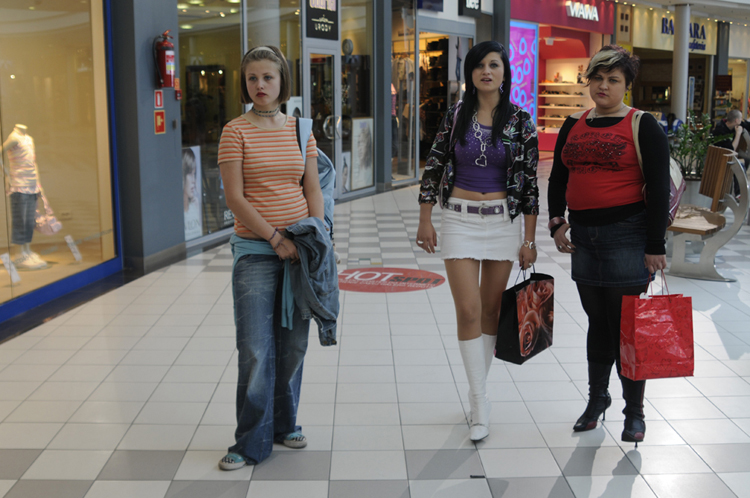 There was a report on television about that. There was a little documentary made by two journalists: one associated with radio, the other one working for television. Otherwise I would not have known about the problem. I’m not a journalist myself. I’m a filmmaker, but I had to become a journalist for a couple of months. Because the reportage was only thirty minutes long, in order for me to write a long feature-length film I had to follow those girls for a couple of months and research.
There was a report on television about that. There was a little documentary made by two journalists: one associated with radio, the other one working for television. Otherwise I would not have known about the problem. I’m not a journalist myself. I’m a filmmaker, but I had to become a journalist for a couple of months. Because the reportage was only thirty minutes long, in order for me to write a long feature-length film I had to follow those girls for a couple of months and research.
It was extremely shocking to me to find out that there was this little girl, who’s only 13 years-old, and suddenly the biggest problem of her life is to have a proper cell phone, because she had an old cell phone. And when the girls suggested that she should sleep with a sponsor at a shopping mall, suddenly it wasn’t an issue of like going to bed with someone and losing her virginity, but to actually have finally that good cell phone and be accepted by the group. So it was just crazy in a way that suddenly going to bed with a guy became like this ordinary thing. Although she was only 13, just doing sex for money became like anything else. Like you can play basketball, go to bed with an older guy and then be paid for it, and dance on a pole.
What was your approach to adapting all of your research into a full-length feature?
 There was an advantage of the fact that I had already done a 30-minute long version of Mall Girls. So there was a short, and that’s something I made in school, and then went on to the Gdynia film festival in Poland. And the film was screened there while I was attending a screenwriting lab and doing a pitch to the producers. But also, I did not want it to be yet another gray melodramatic slash sad heartbreaking film. The topic suggested that, but that’s not how I wanted to pitch it or see it. That brought in producers that really helped, because the context is there are a lot of really touchy-feely slash sad depressing films in Polish cinema, and I wanted to show more color. The short film was like a demo, or a calling card that was developed into a feature.
There was an advantage of the fact that I had already done a 30-minute long version of Mall Girls. So there was a short, and that’s something I made in school, and then went on to the Gdynia film festival in Poland. And the film was screened there while I was attending a screenwriting lab and doing a pitch to the producers. But also, I did not want it to be yet another gray melodramatic slash sad heartbreaking film. The topic suggested that, but that’s not how I wanted to pitch it or see it. That brought in producers that really helped, because the context is there are a lot of really touchy-feely slash sad depressing films in Polish cinema, and I wanted to show more color. The short film was like a demo, or a calling card that was developed into a feature.
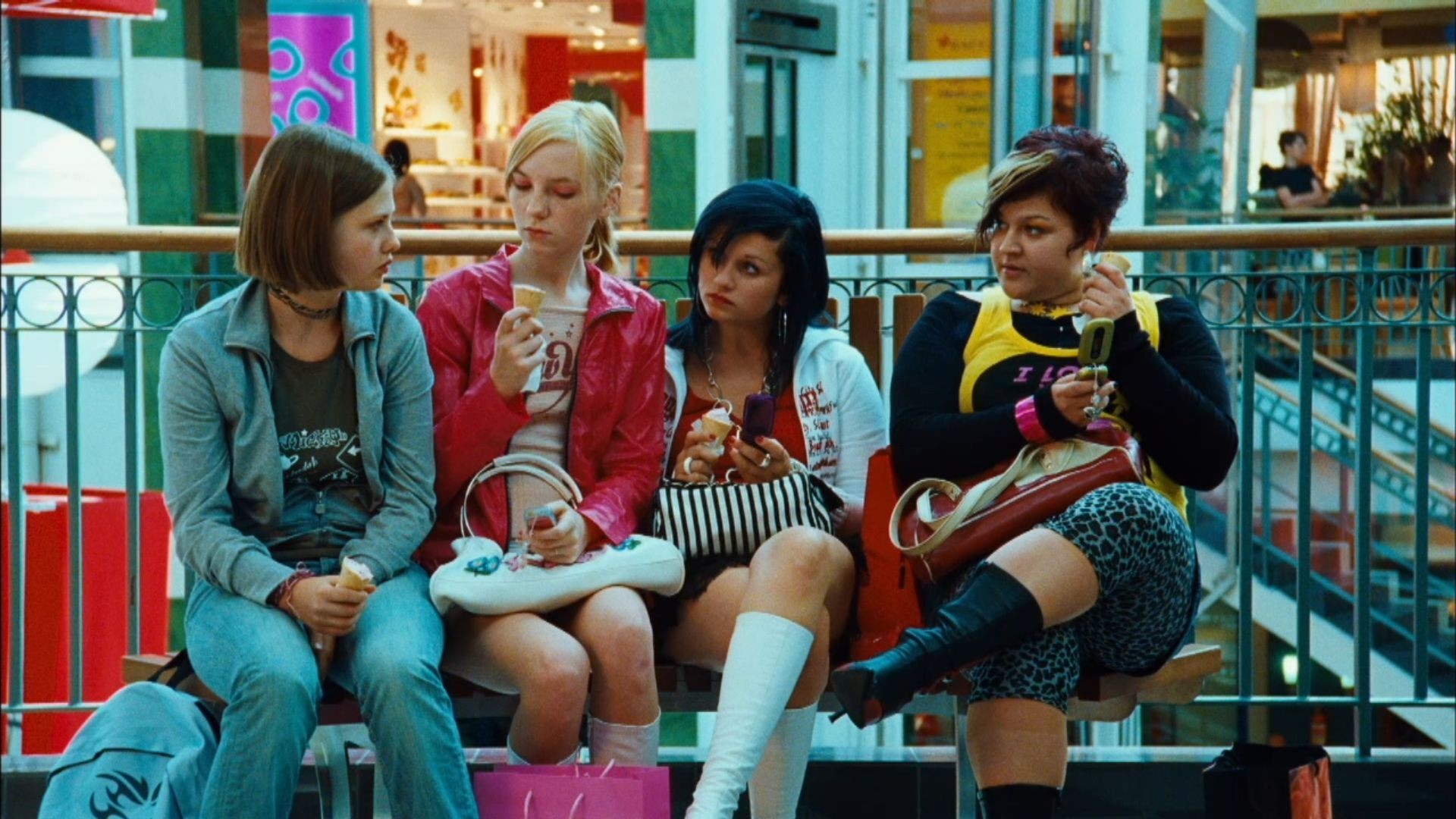 All shopping centers rejected the idea of us shooting there, so it was a huge problem. So, we had to go with just one that agreed to work with us, and it wasn’t my favorite. It’s not the center of Warsaw. It’s just a small one. Why the other ones disagreed? Of course they did not want to be identified with this problem. They did not want to admit that there was a problem of mall girls and little prostitutes in those shopping centers. And then soon after, when the film was released, they started taking care of that, and making sure that there aren’t teenage girls walking around prostituting.
All shopping centers rejected the idea of us shooting there, so it was a huge problem. So, we had to go with just one that agreed to work with us, and it wasn’t my favorite. It’s not the center of Warsaw. It’s just a small one. Why the other ones disagreed? Of course they did not want to be identified with this problem. They did not want to admit that there was a problem of mall girls and little prostitutes in those shopping centers. And then soon after, when the film was released, they started taking care of that, and making sure that there aren’t teenage girls walking around prostituting.
What was the response of Lincoln Center’s New York City audience to your film?
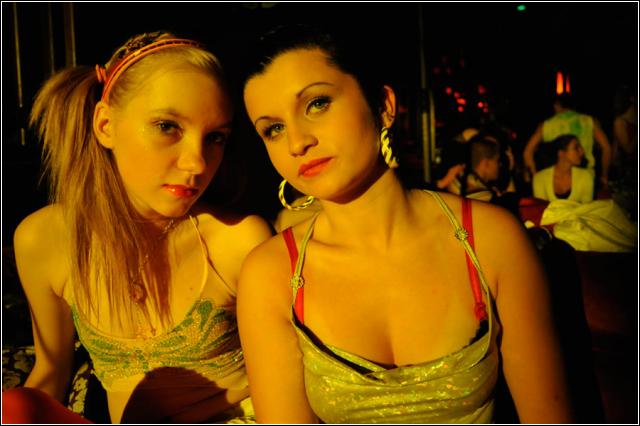 The questions from the audience, particularly the older audience, it seemed like they interpreted the whole film through the perspective of the Polish political, economical situation — thinking perhaps, “Well, this is such a poor country where little girls are forced to do those things.” Whereas I feel that this is a universal problem, that this can happen also in other countries. And especially when I was traveling with the film around the world, again depending on the age of the audience, some young people were saying, “Well, this problem actually exists in our country too.” It’s not so much really related to the political transitions that the country is in, because that’s not the situation in Poland anymore. I mean, there’s poverty, but we’re kind of beyond that post-Communist era.
The questions from the audience, particularly the older audience, it seemed like they interpreted the whole film through the perspective of the Polish political, economical situation — thinking perhaps, “Well, this is such a poor country where little girls are forced to do those things.” Whereas I feel that this is a universal problem, that this can happen also in other countries. And especially when I was traveling with the film around the world, again depending on the age of the audience, some young people were saying, “Well, this problem actually exists in our country too.” It’s not so much really related to the political transitions that the country is in, because that’s not the situation in Poland anymore. I mean, there’s poverty, but we’re kind of beyond that post-Communist era.
Someone from the audience also asked about the kitchens. They said that the kitchens were extremely small, compared to Americans. In a way it’s true that they created their own worlds in those apartments. In Alicja, the main character’s case, it’s a bit more complicated because she shares a room with a sister. And the character of the home is determined by the parents too, but the way the apartments are is a part of the characters. But maybe also, because those apartments are so tiny and kind of dark, they prefer to be outside, and they prefer to be at the shopping mall where there is music, colors, excitement.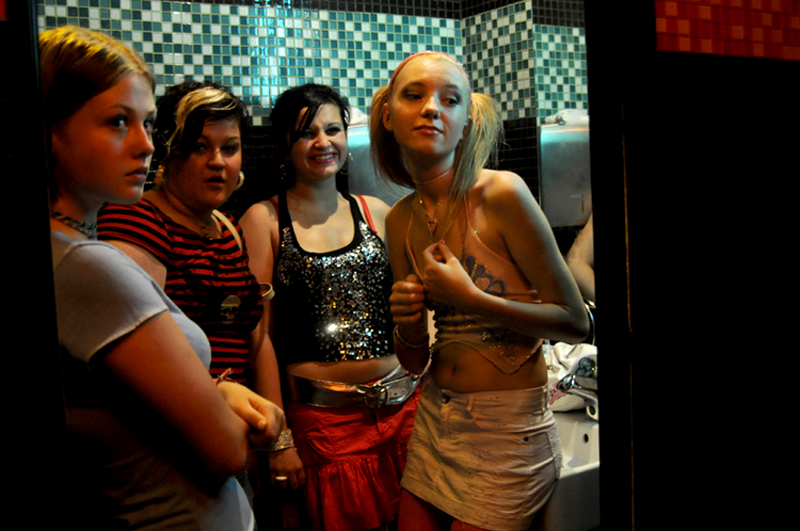
In Poland, the reception was perceived as controversial. But the thing is, I never heard that from young people. If anything, it would always come from an older more conservative group. At the same time, it seemed like they knew what I was showing was true, but they just wouldn’t admit it. They would focus on the fact that it was controversial and say that, “Yes, there is some truth to that.” Maybe it’s a part of the national making. Like the way we are as Poles — that sometimes we want to be quiet about certain problems, and choose to not talk about them.
How important was your own age to directing the young actresses in Galerianki?
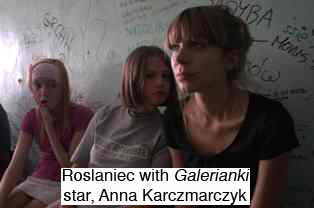 It was extremely important that I was only 10 years older than them. So it makes a huge difference if you’d have say a 40 year-old guy, for example, work with the girls. And the same goes for the girls and the boys. And partially I’m this age, but also go to shopping malls. I mean, I shop for something else, but it’s something that I was able to relate to and talk to them about.
It was extremely important that I was only 10 years older than them. So it makes a huge difference if you’d have say a 40 year-old guy, for example, work with the girls. And the same goes for the girls and the boys. And partially I’m this age, but also go to shopping malls. I mean, I shop for something else, but it’s something that I was able to relate to and talk to them about.
I feel that probably the condition of art in general in Poland, and maybe in general everywhere else at the turn of the century, is not so strong. Because it is a moment of doubt, like transitioning to the new era. As far as representing a certain social group, like for example the youth of Poland, I’m not sure that’s even the goal of cinema. Of course that could be done, but the cinema doesn’t necessarily have to play a certain social role. Now there are many films in Poland about youth, and so it is represented, and they are honest. That wasn’t the case in the past, but I don’t necessarily think that this is the most important thing to do in cinema in Poland.
Which Polish filmmaker best evokes the country, and what’s the most cinematic area of Warsaw?
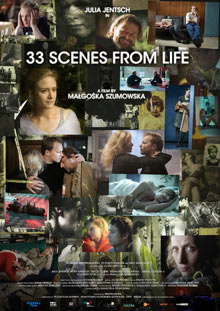 I think that the person who would be that person is Malgorzata Szumowska, the young Polish director who is a little older than me, especially in her film 33 Scenes From Life. And the reason for that is she doesn’t show Poland as only a post-Communist country, but is able to tell more universal stories and really show it in that universal context, European context. And this is actually true, because especially young people, they are way past that Communist era.
I think that the person who would be that person is Malgorzata Szumowska, the young Polish director who is a little older than me, especially in her film 33 Scenes From Life. And the reason for that is she doesn’t show Poland as only a post-Communist country, but is able to tell more universal stories and really show it in that universal context, European context. And this is actually true, because especially young people, they are way past that Communist era.
Yes, there is a place, and I’m not very original in choosing it, because it inspires a lot of filmmakers. It’s Praga on the east side of Warsaw across the Vistula River. And I’m actually just in post-production of my newest movie. So I shot there a lot, and we didn’t necessarily say, “Praga, Praga,” but we’re using the streets, the walls, the exteriors of old buildings, townhouses. It’s very charming. The camera really loves Praga. It’s another film about a teenager. She’s seventeen. Her name is Natalia, and she had a baby, because she thought it was a cool thing to have a baby. But the real reason she actually had the baby is so that she will have someone who will love her, and who she could love.
How difficult is it to secure financing and distribution in Poland for a film like Galerianki?
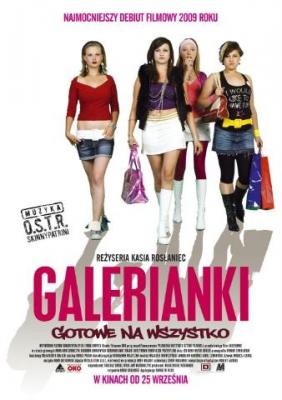 In Poland, it’s relatively easy, because there aren’t that many films getting made. So eventually almost every film will find a distributor there. It’s a question of how big is the distribution, because one movie has only five copies, and my movie had fifty copies, and in the end seventy. That distributor made other copies every week, because it was a big success in the cinema. But after that, he did nothing with this movie and didn’t sell it abroad. I don’t know why. It’s a very strange situation because, for example, I won the prize in the Valencia Cinema Jove. It’s a festival in Spain, and the main prize there is the money for distribution in this country. But my distributor didn’t sell it to Spain. So it’s the question of why it was. And I was in Toronto with Mall Girls, and there was nobody with me to talk about the movie and to talk with the sales managers from the other countries. I was there with my mom. It was my first film festival, and so it was a ridiculous situation. It’s really outrageous how at the festival, everyone was interested in the film. It was a classic example of how you can actually sell a Polish film abroad, because the New York Times was interested. There was an article on the first page of The Arts about Mall Girls. There was an Italian television crew that was shooting for a week material about Mall Girls, and many other journalists and general interest. They were not able to strongly pitch it and push. With the second movie, now the producer of that is Zentropa, so we’ve got now a sales agent. The whole industry in Poland is learning, and especially that aspect of promoting. Distribution is still growing and needs a lot of advice from the European and American parties. So producers, even in American independent cinema, focus on just making the film. The film is made. It was finished, released in theaters, and they are happy — without understanding that, especially today, this is when it all starts. It’s a product that should be marketed, and all festivals now have film markets.
In Poland, it’s relatively easy, because there aren’t that many films getting made. So eventually almost every film will find a distributor there. It’s a question of how big is the distribution, because one movie has only five copies, and my movie had fifty copies, and in the end seventy. That distributor made other copies every week, because it was a big success in the cinema. But after that, he did nothing with this movie and didn’t sell it abroad. I don’t know why. It’s a very strange situation because, for example, I won the prize in the Valencia Cinema Jove. It’s a festival in Spain, and the main prize there is the money for distribution in this country. But my distributor didn’t sell it to Spain. So it’s the question of why it was. And I was in Toronto with Mall Girls, and there was nobody with me to talk about the movie and to talk with the sales managers from the other countries. I was there with my mom. It was my first film festival, and so it was a ridiculous situation. It’s really outrageous how at the festival, everyone was interested in the film. It was a classic example of how you can actually sell a Polish film abroad, because the New York Times was interested. There was an article on the first page of The Arts about Mall Girls. There was an Italian television crew that was shooting for a week material about Mall Girls, and many other journalists and general interest. They were not able to strongly pitch it and push. With the second movie, now the producer of that is Zentropa, so we’ve got now a sales agent. The whole industry in Poland is learning, and especially that aspect of promoting. Distribution is still growing and needs a lot of advice from the European and American parties. So producers, even in American independent cinema, focus on just making the film. The film is made. It was finished, released in theaters, and they are happy — without understanding that, especially today, this is when it all starts. It’s a product that should be marketed, and all festivals now have film markets.